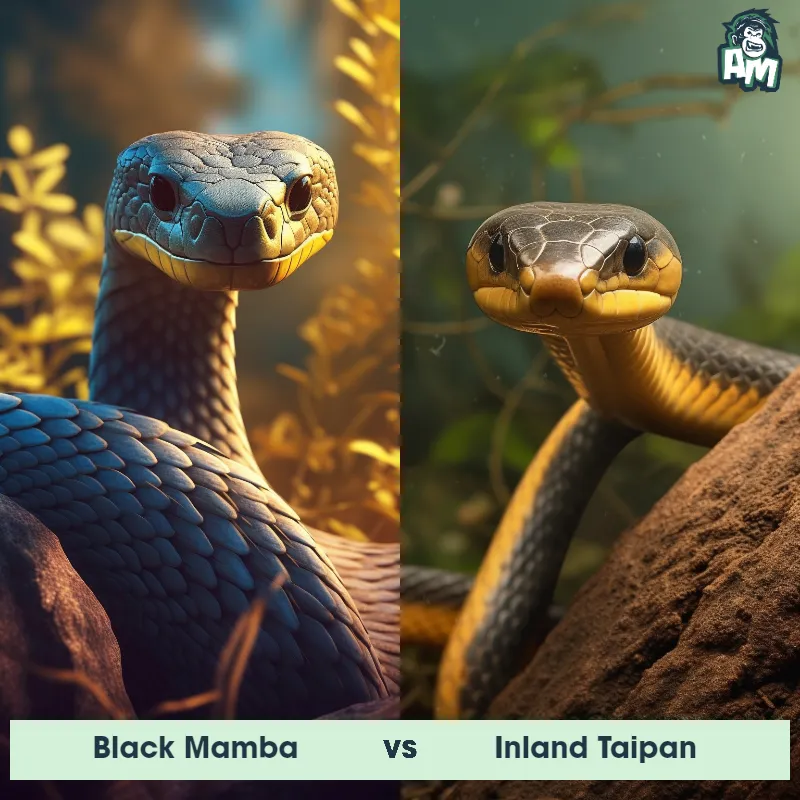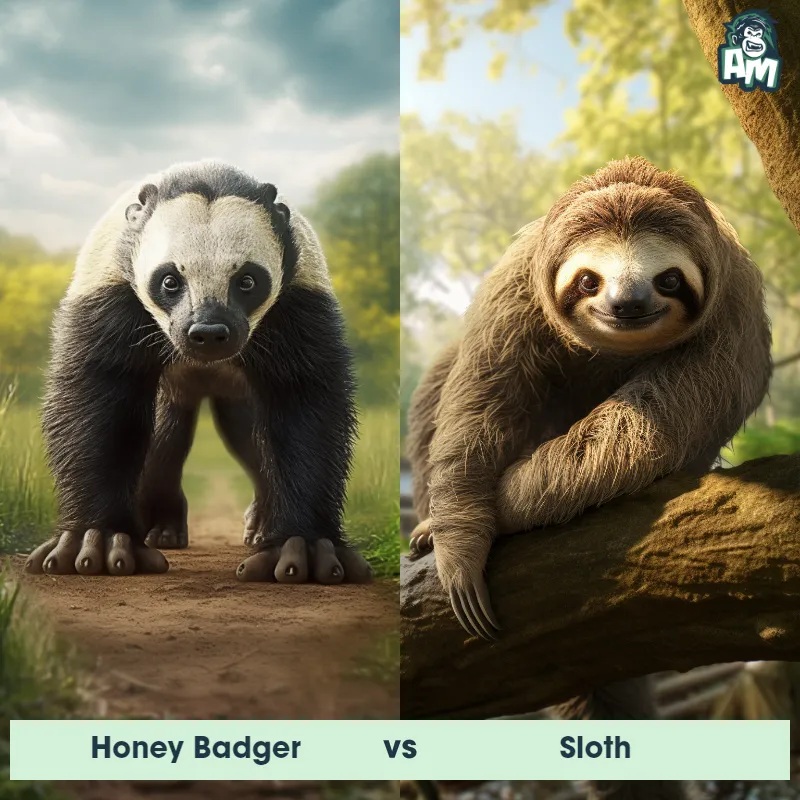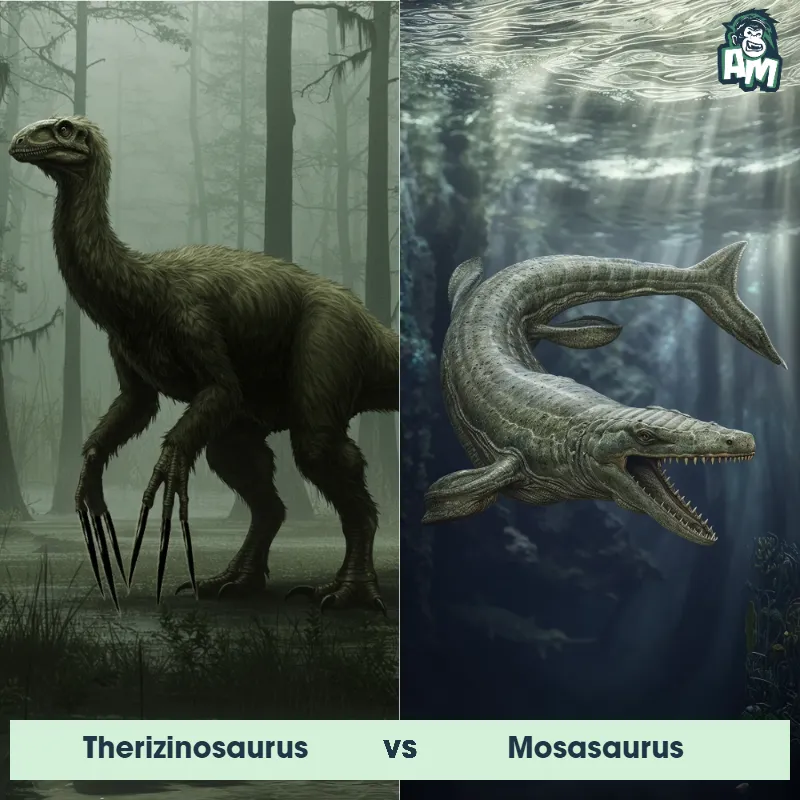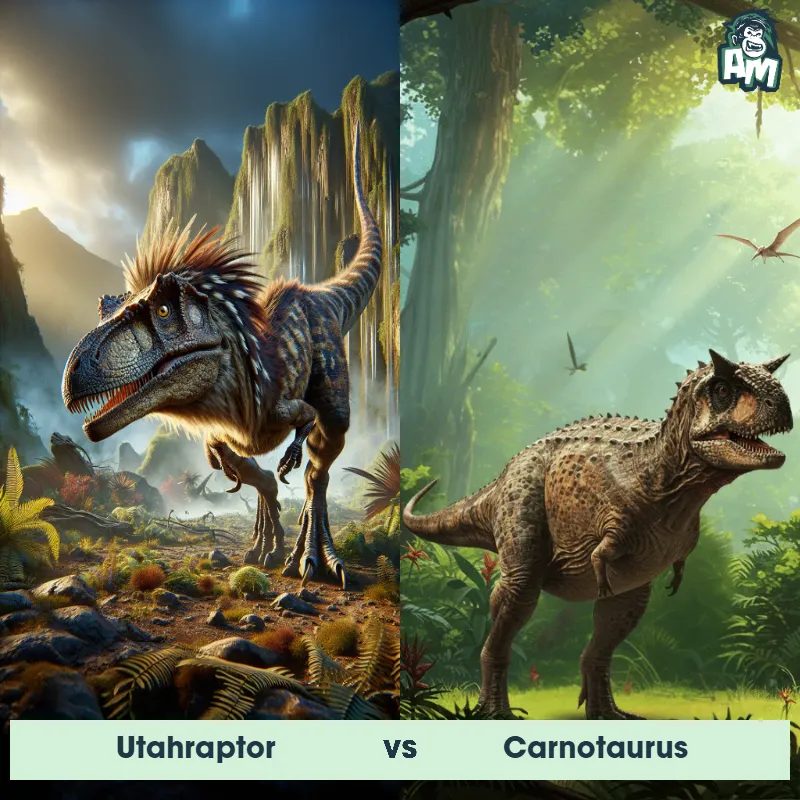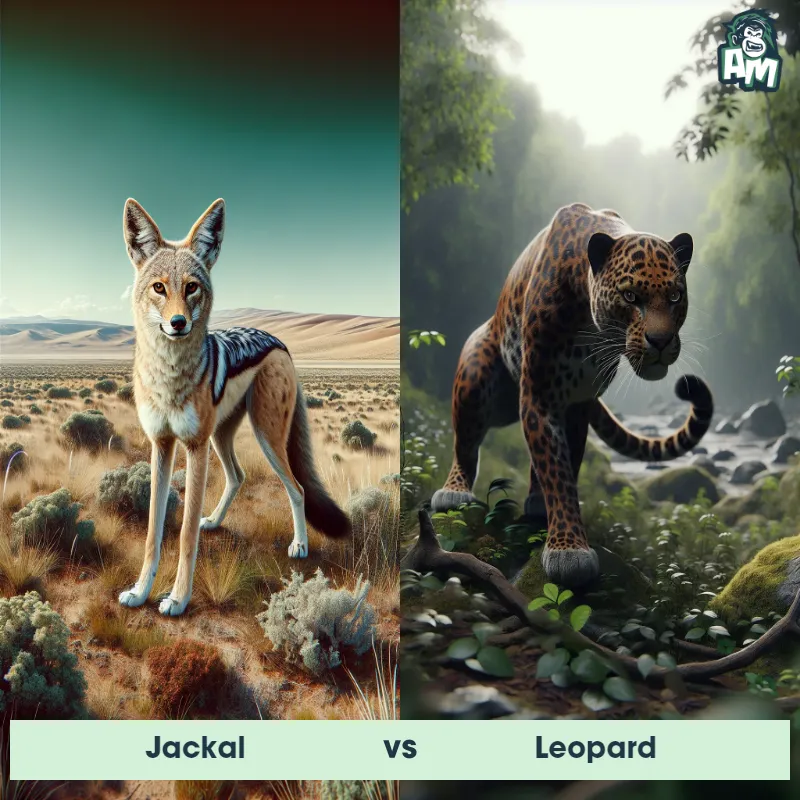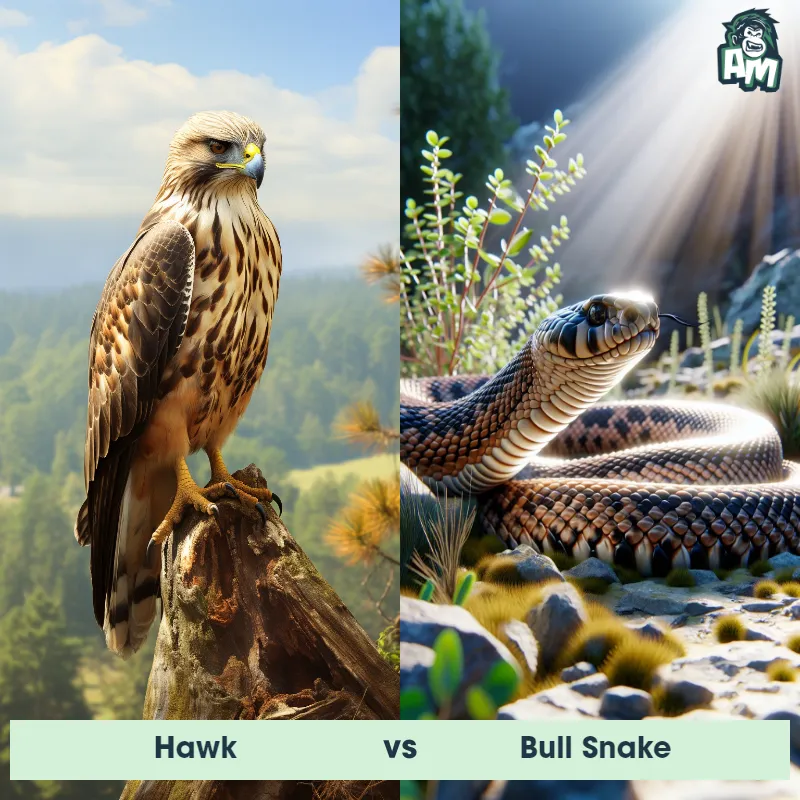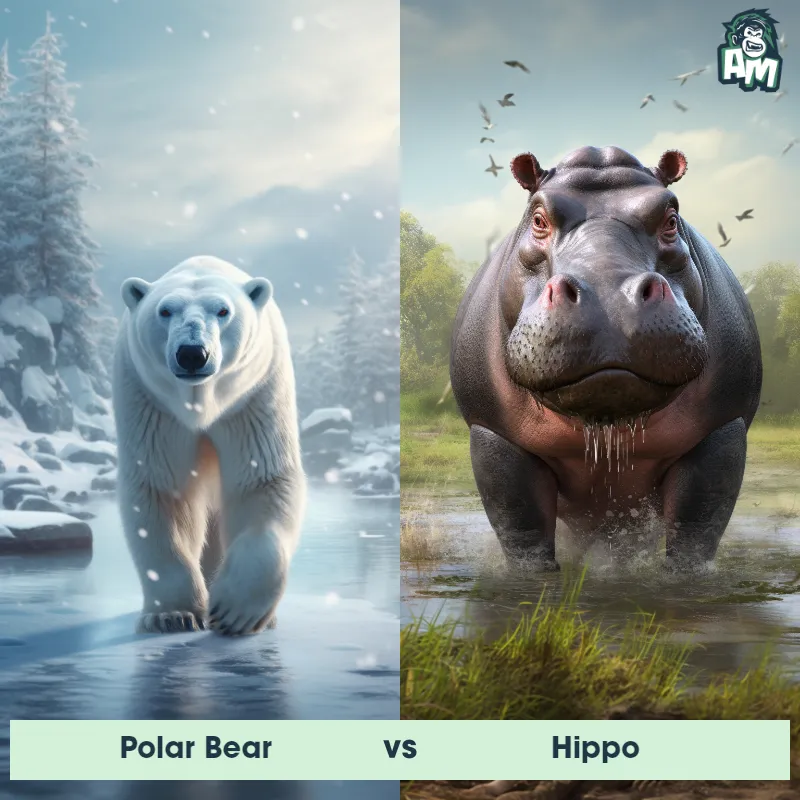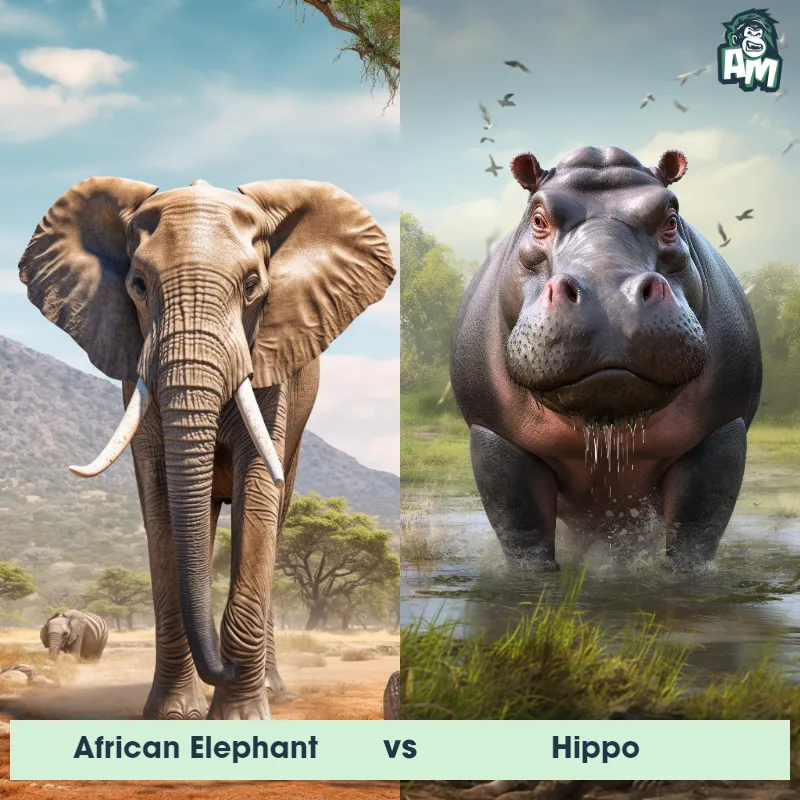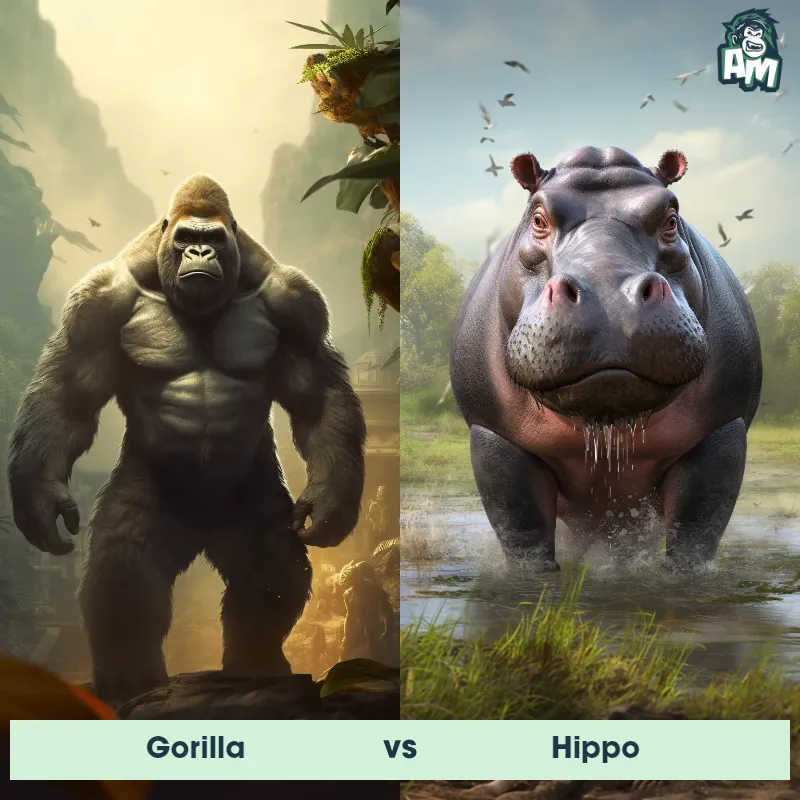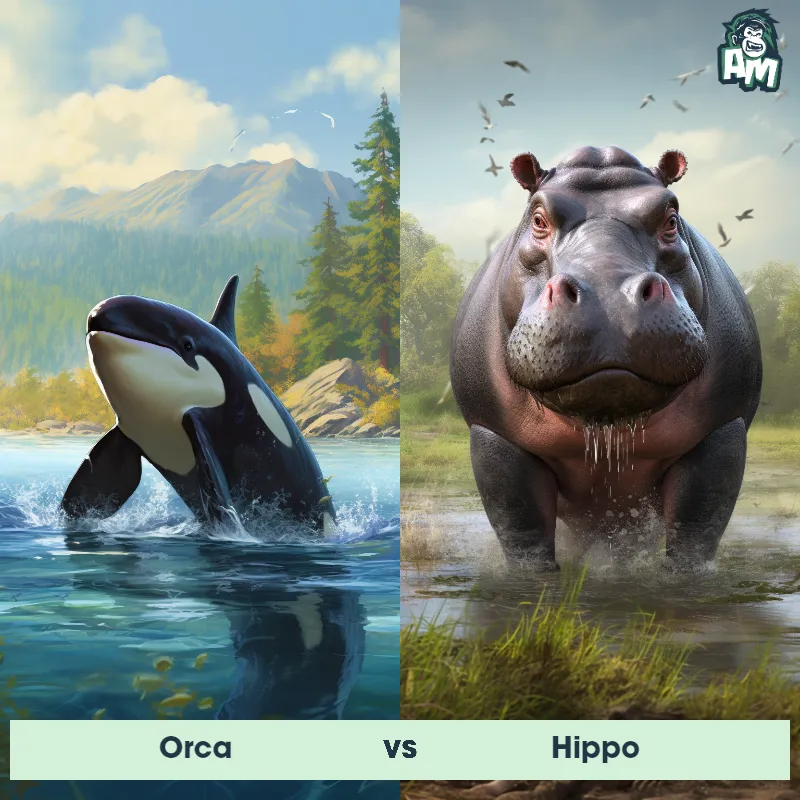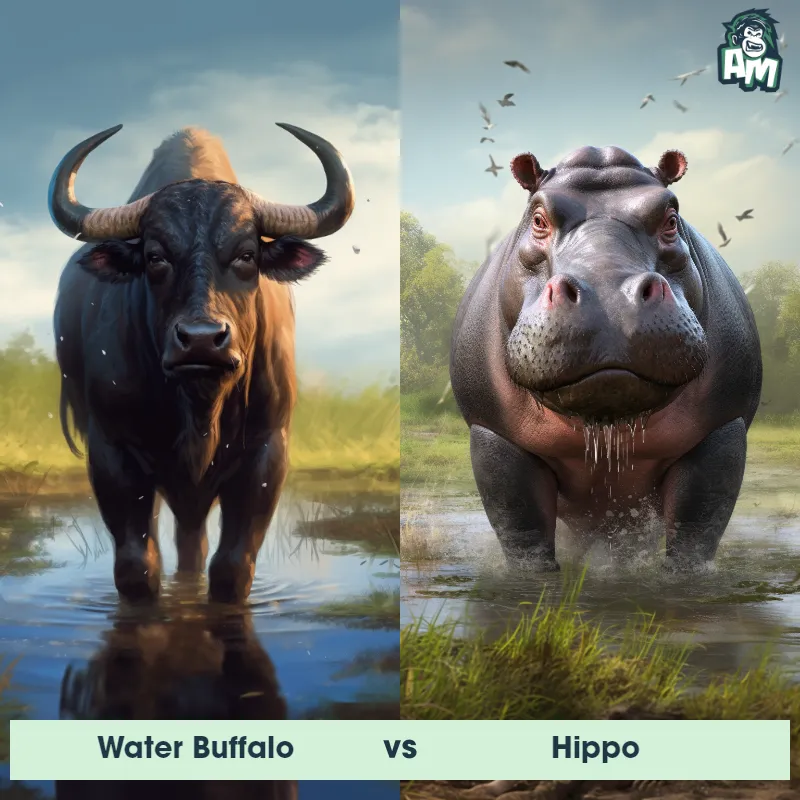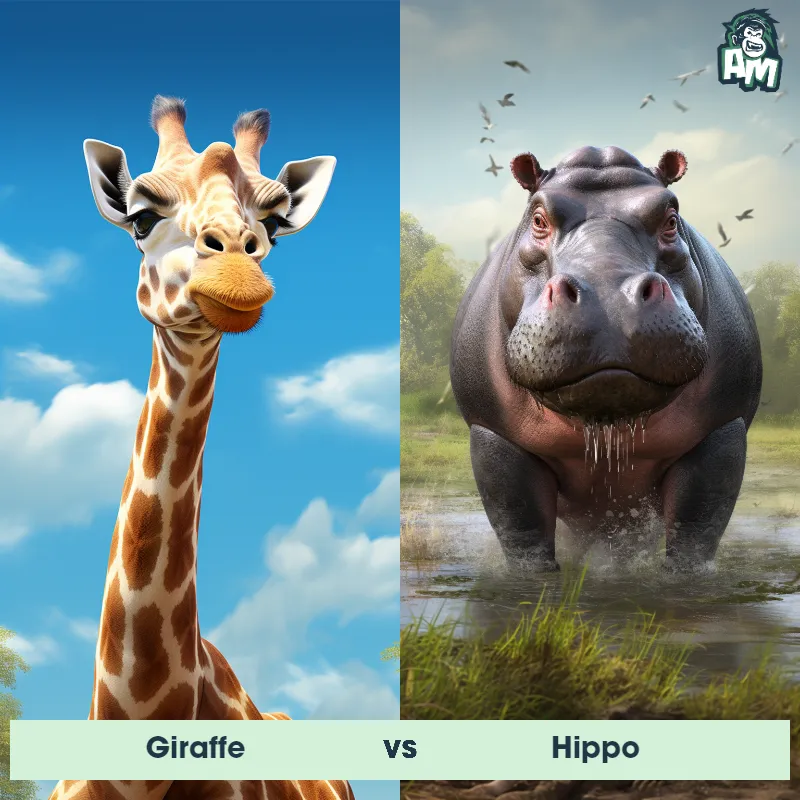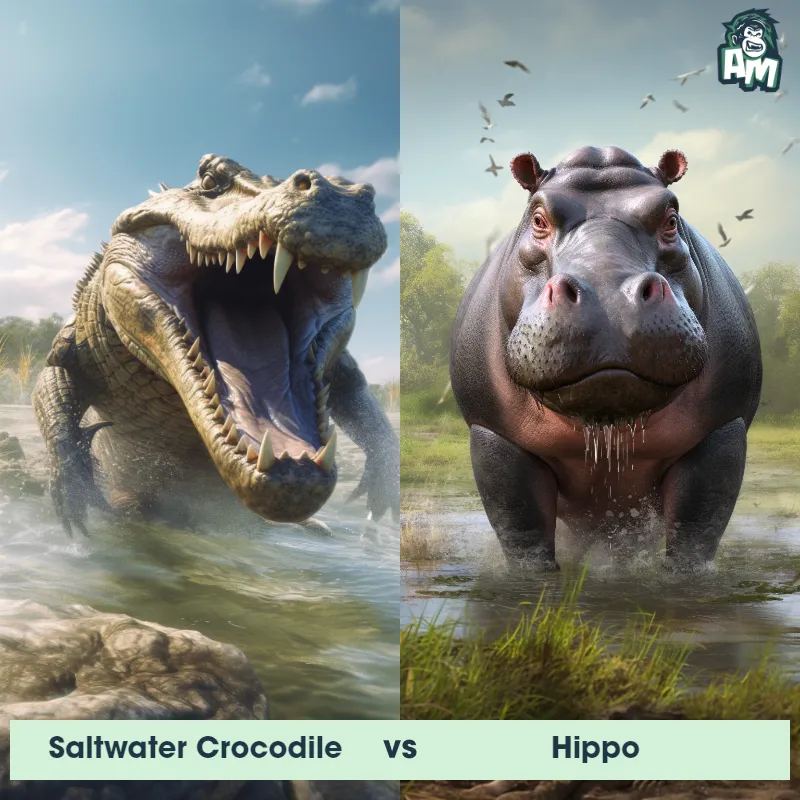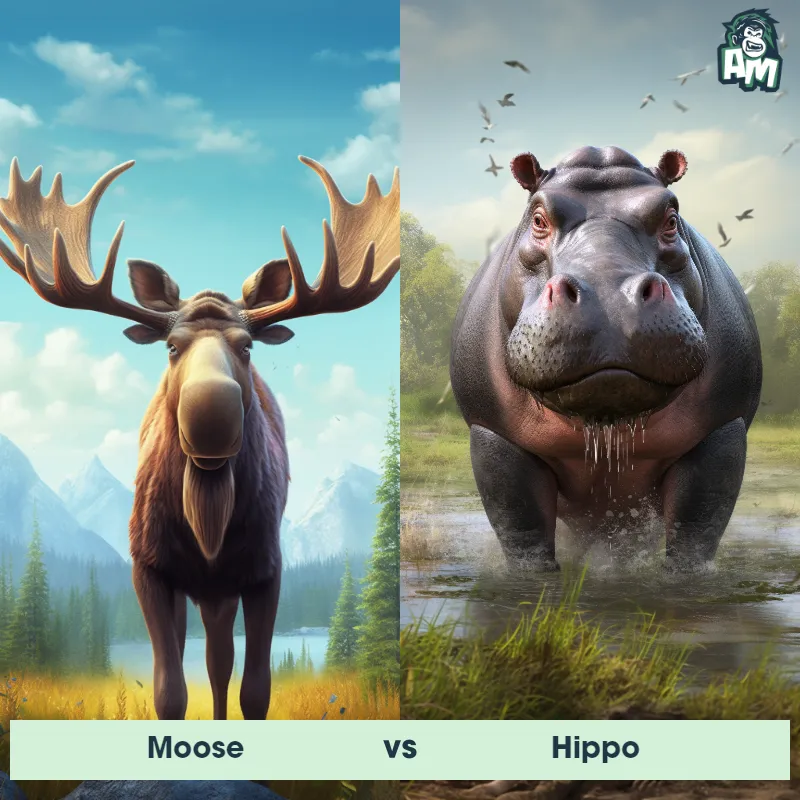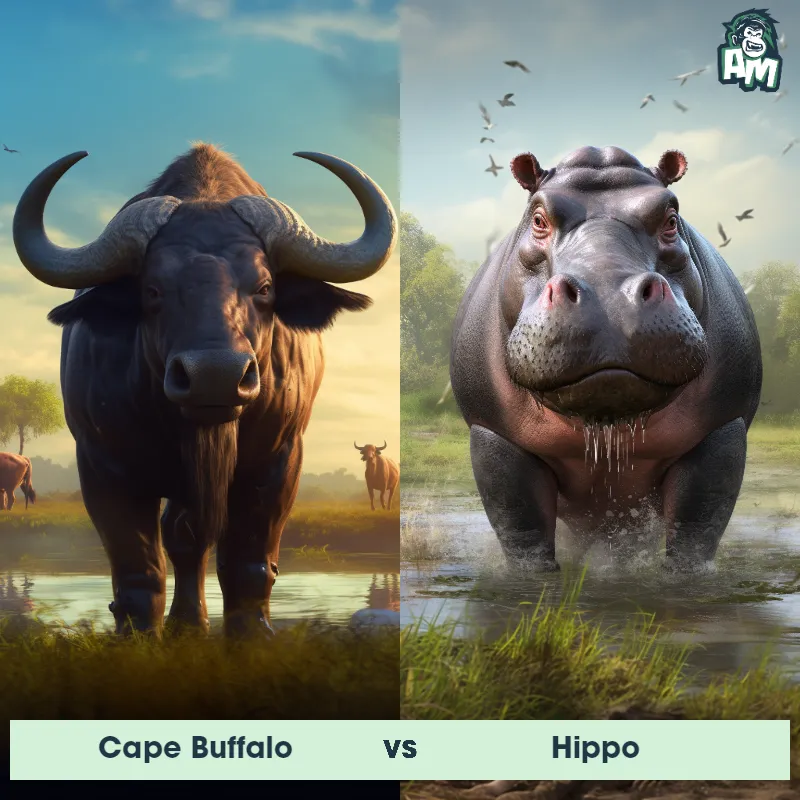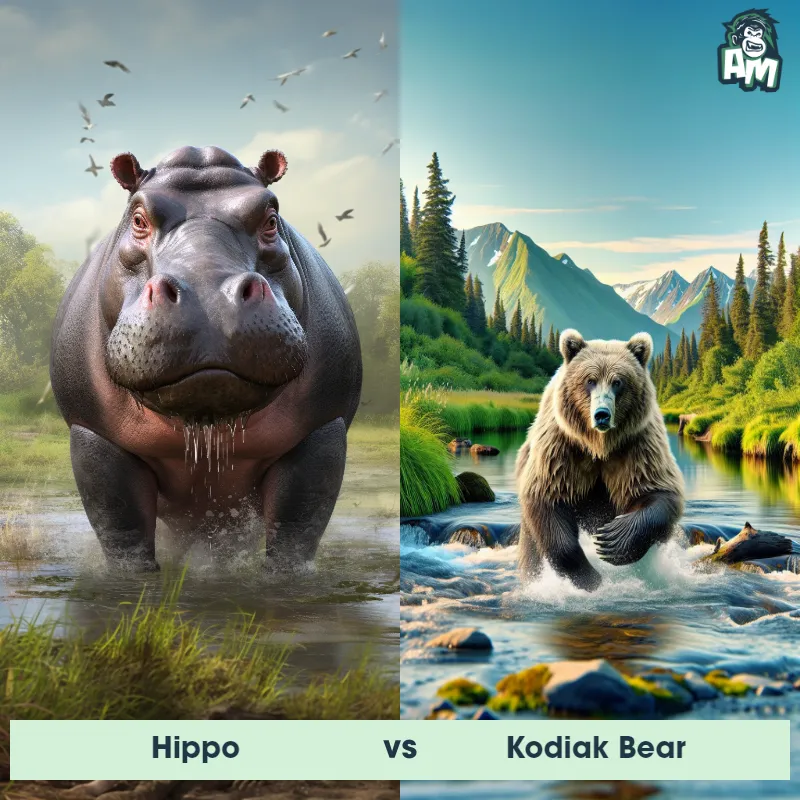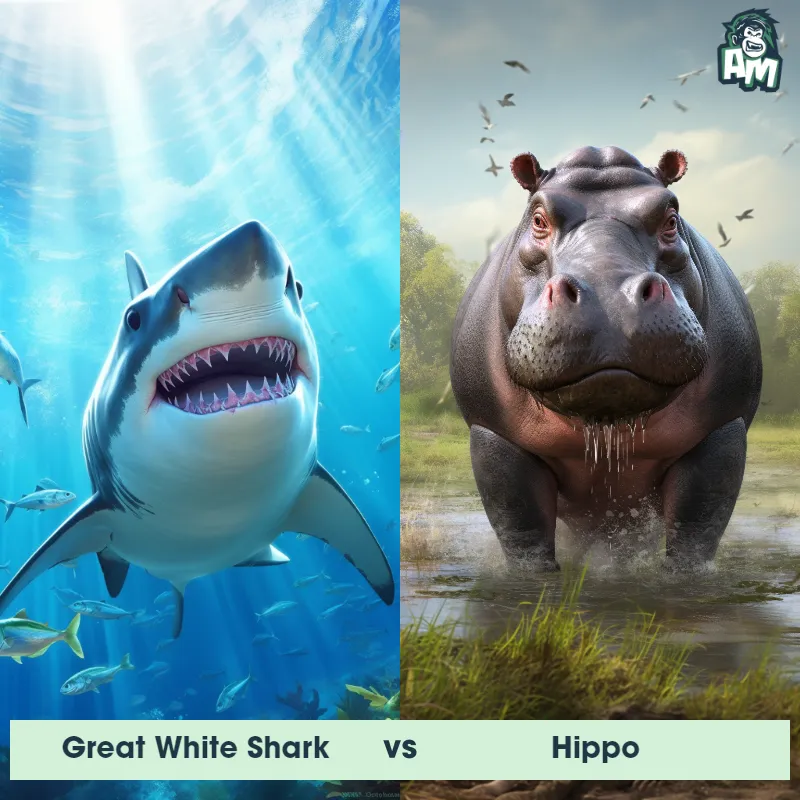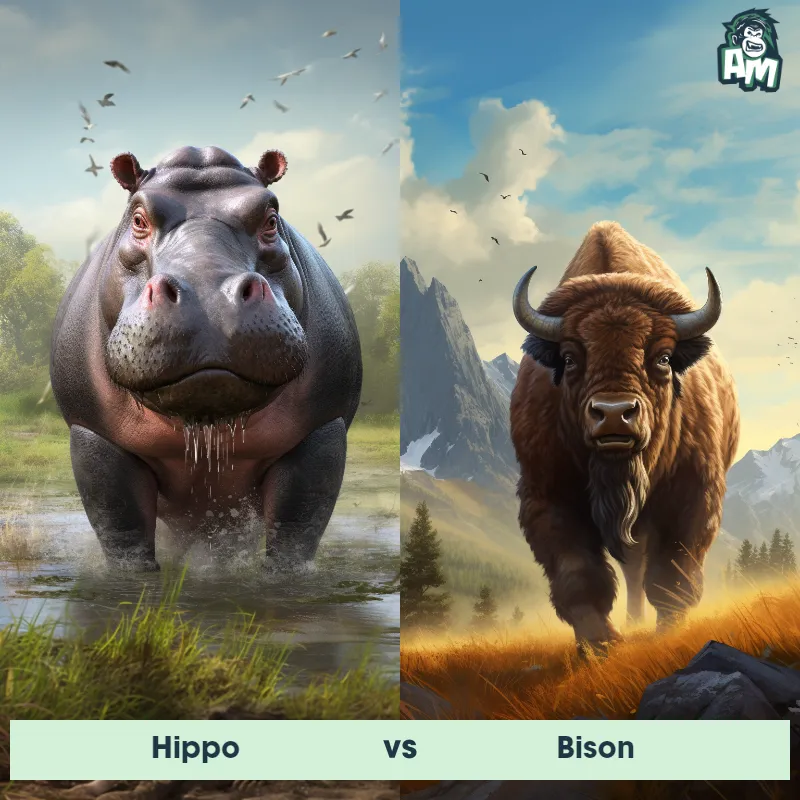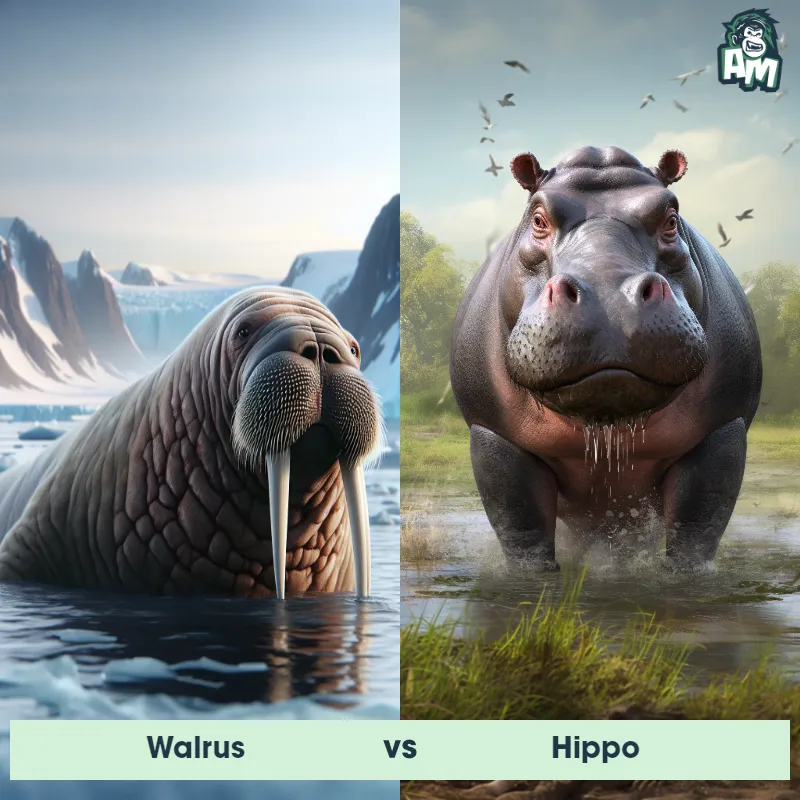Hippo vs MandrillSee Who Wins

Ladies and gentlemen, welcome to this thrilling matchup between two fierce competitors in the animal kingdom! We have an exciting three-round fight ahead of us, pitting a powerful hippo against a cunning mandrill. The atmosphere here is electric as the crowd eagerly awaits the clash of these incredible creatures. Let the battle begin!
Contender 1: Hippo
The hippopotamus, often simply referred to as the hippo, is a large, mostly herbivorous mammal native to sub-Saharan Africa. With a barrel-shaped body, short legs, and a massive head with a broad, round snout, the hippo is the third-largest land animal after the elephant and rhinoceros. Hippos spend most of their day in the water or mud to keep their skin moist and protect it from the sun. Despite their bulk, hippos are excellent swimmers and can run surprisingly fast on land.
Fun Fact: Hippos secrete a natural sunscreen in the form of an oily red substance, which earned them the nickname "blood sweat," although it is neither blood nor sweat.
Contender 2: Mandrill
The Mandrill, scientifically known as Mandrillus sphinx, is a highly distinctive primate species native to the tropical rainforests of western-central Africa. These charismatic creatures are known for their striking appearance, with vibrant colored fur and distinctive facial features. Adult males are particularly striking, with their bright blue and red nose, pronounced brow ridges, and elongated canine teeth. They have a sturdy body structure and possess a long tail, which aids in their arboreal locomotion. Mandrills are social animals and live in large troops, consisting of one dominant male, a group of females, and their offspring. As omnivores, their diet incorporates a variety of fruits, seeds, leaves, insects, and even small vertebrates. They communicate using a combination of vocalizations, facial expressions, and body gestures.
Fun Fact: One fascinating fact about the Mandrill is that it holds the title for having the most colorful face among all primates, with a gradient of vibrant hues ranging from electric blue to purple, red, and pink.
Matchup Stats
| Hippo | Mandrill | |
|---|---|---|
| Size | 5 feet tall at shoulder, 13 feet long (1.5 meters tall at shoulder, 4 meters long) | Up to 3 feet (0.9 meters) in height |
| Weight | 3,000 to 4,000 pounds (1,400 to 1,800 kilograms) | Up to 77 pounds (35 kilograms) |
| Speed | 19mph (30km/h) | 20mph (32km/h) |
| Key Strength | Powerful jaws with large teeth | Aggressive canine teeth |
| Biggest Weakness | Poor eyesight | None in particular |
Current Votes
Hippo vs Mandrill
See Who Wins
View More Matches
Looking For More?
Similar Matches
Scientific Stats
| Hippo | Mandrill | |
|---|---|---|
| Scientific Name | Hippopotamus amphibius | Mandrillus sphinx |
| Family | Hippopotamidae | Cercopithecidae |
| Habitat | Rivers, lakes and swamps | Tropical rainforests |
| Geography | Sub-Saharan Africa | Western-central Africa |
| Diet | Herbivorous, primarily grasses | Omnivorous (fruits, seeds, leaves, insects, small vertebrates) |
| Lifespan | 40 years - 50 years | 20 years - 25 years |
Key Differences between Hippo and Mandrill
- Body shape: Hippos have a massive, barrel-shaped body with a short, stocky appearance and short legs, whereas mandrills have a more slender body with longer limbs, enabling them to move efficiently throughout the trees.
- Tail differences: Hippos have a very short and stubby tail, measuring only about 10-20 centimeters in length, concealed within their bulky body, whereas mandrills possess a long and slender tail, measuring around 60-85 centimeters, which they often hold upright during movement.
- Coloration: Hippos have a very distinct dark gray or brownish skin, often appearing hairless, while mandrills display a vibrant and multi-colored patterned face and body, with shades of blue, red, and yellow, as well as a bright red nose.
- Habitat: Hippos are semi-aquatic mammals, spending most of their time in rivers, lakes, and swamps, while mandrills inhabit terrestrial environments, such as rainforests and dense woodlands.
- Size: Hippos are significantly larger than Mandrills, with adult male hippos weighing up to 1.5 tons and reaching lengths of over 13 feet, while adult male mandrills typically weigh around 50 pounds and measure only about 3 feet in length.
- Facial features: While both species have large heads, Hippos have a massive and wide mouth extending sideways, revealing impressive canine teeth, whereas mandrills have a protruding snout and pronounced elongated canine teeth, which are often displayed during social interactions.




